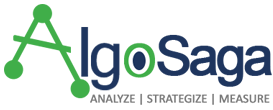Last Updated on April 13, 2025 by Admin
Search engine optimization (SEO) is now necessary for any business that wants to thrive in the digital market. Updates are crucial for any SEO campaign, as they inform clients of the progress made and the effects of the implemented changes. A recent survey says more than 58% of marketing agencies provide SEO reports for clients every month.
An effectively designed SEO report proves the efficacy of your efforts and allows you and your clients to make evidence-based decisions. So, let us provide an overview of creating an SEO report, what important measures to monitor, and the samples for your convenience.
What is an SEO report?
An SEO report is a document that describes the website’s SEO performance, the traffic it gets from organic search results, and other vital indicators. It gives a general understanding of the website’s SEO status, the work done, and the work still to be done. SEO reports are crucial for explaining to clients how your SEO activities have benefitted them, how they have gotten their value, and the best ways to proceed in the future.
How To Choose SEO Reporting Metrics and KPIs
To write a professional SEO report, one must identify the relevant parameters and the metrics or KPIs that would be valuable to the client. Several metrics are important to define, although they may differ based on the client’s objectives as well as the specific field of activity:
- Organic Traffic: This metric focuses on the total number of visitors one receives from organic searches on their website. It is one of the best tools for determining the effectiveness of SEO strategies.
- Keyword Rankings: Analyzing the position of target keywords allows one to understand how effectively the website occupies the positions on SERP and which aspects require further work.
- Conversion Rates: Using the percentage of the targeted organic traffic that eventually turns into leads, sales, or whatever other call-to-action is relevant for the particular client illustrates the value of SEO for the client.
- Backlink Profile: Evaluating the link population concerning the number of links and the quality of the referring sites gives a glimpse of the site’s relevance and possible opportunities for optimization.
- Site Health: Technical elements like site speed, mobile-friendliness, and crawlability/ indexation guarantee that the website is prepared for user search engine ranking and usage.
SEO Reporting Tools
To create an SEO report, various tools are provided that are as simple as a spreadsheet and as complex as SEO software. Here, we will outline five of the best SEO monitoring tools that will allow you to create comprehensive and meaningful SEO reports.
- Google Analytics: Google Analytics is an incredible solution that helps website owners track visitors and analyze traffic. It gives you full information on how your visitors are arriving, how they use your site, and what they do.
- SEMrush: SEMrush is a versatile SEO tool that can provide detailed reports on the performance of the target keywords. It helps monitor the positions of your targeted keywords, review the overall condition of your website, and assess backlinks.
- Ahrefs: Ahrefs is famous for its strong backlink indexing and accurate keyword suggestions. This is because it gives detailed reports on your website’s link profile and keyword rankings.
- Moz: Moz has SEO features and capabilities, such as keyword research, link prospecting, and site crawling. It has several reporting features that give information on the site’s SEO performance.
- Google Search Console: Google Search Console is an advanced free tool developed by Google that enables you to manage your site’s presence in Google search results. It helps determine how Google perceives your site and identifies areas that need consideration.

What Should You Include in Your SEO Reporting
When it comes to generating the SEO report, it is necessary to include only the information that would enable the client to evaluate his website’s performance. An ideal report should include or outline technical issues, content audits, backlinks, etc. Below are the vital parts of SEO reports that you should not miss:
1. Reporting on Technical SEO
Technical SEO is the core and central aspect of any SEO efforts across a website. This feature also makes it possible for search engines to crawl and index your client’s website and rank it. In your report, dedicate a section to evaluate the website’s technical aspects, including:
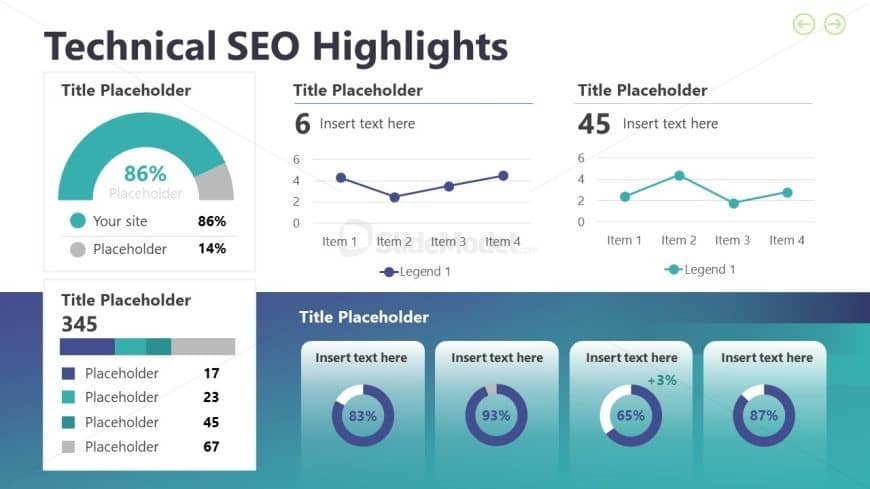
- Site speed and performance: One must use tools like Google PageSpeed Insights or even GTmetrix to get insights on how fast the website loads and other tips that the tools may give.
- Mobile-friendliness and responsiveness: Mobile-first indexing means that site speed and usability on mobiles should be given prime importance. A Browser Check should be performed to evaluate the website’s responsiveness and identify any problems.
- Crawlability and indexation: Review the website’s robots.txt file and the XML sitemap to ensure that search engine bots can access and index the most relevant pages. When using tools like Google Search Console, report crawl errors or indexation issues noticed during the process.
- Broken links and error pages: Locate and document any 404 (broken links) or 5xx (server errors) to ensure that these issues do not negatively impact the website’s usability or accessibility to search engine crawlers.
- Site security (HTTPS): It must be determined whether the given website has a valid SSL installed and if it is accessible through HTTPS. Strengthen the message on-site security to users and search engines.
2. Reporting on Keywords and Rankings
Keyword rankings are the measures that should be used to present the results of your SEO campaign. Assign a specific section of your report to analyze your client’s keyword use, such as:
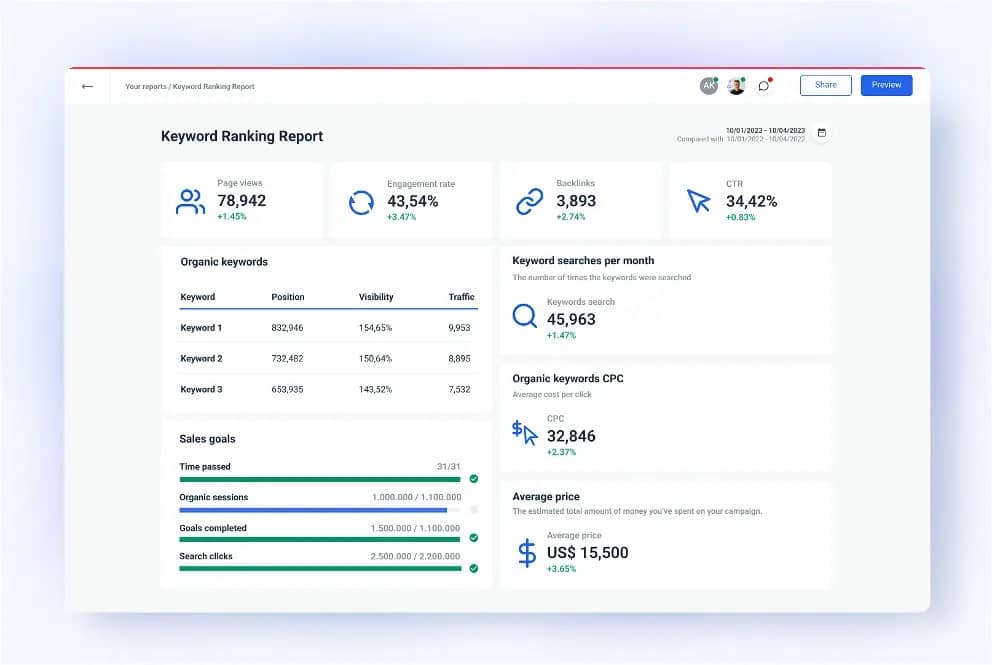
- Top Performing Keywords: List the keywords that are giving you the most traffic, their monthly search volume, current rank, and any changes in rank within the past few months. This lets them know the keywords most likely to attract site traffic.
- Keyword Movements: The key difference is that the tool should mark keywords that have experienced a significant change in ranking. The keywords that show an increase or a decrease in monthly searches and the possible causes of this change should be identified.
- Search Volume and Competition: This will inform you about how much traffic you can expect with your keywords and how much competition you will face. It is useful for determining the potential volume and effort required to sustain or increase positions.
3. Reporting on Content Marketing
Quality content is the key to success in SEO. When drafting a report on content marketing, focus on the following aspects:
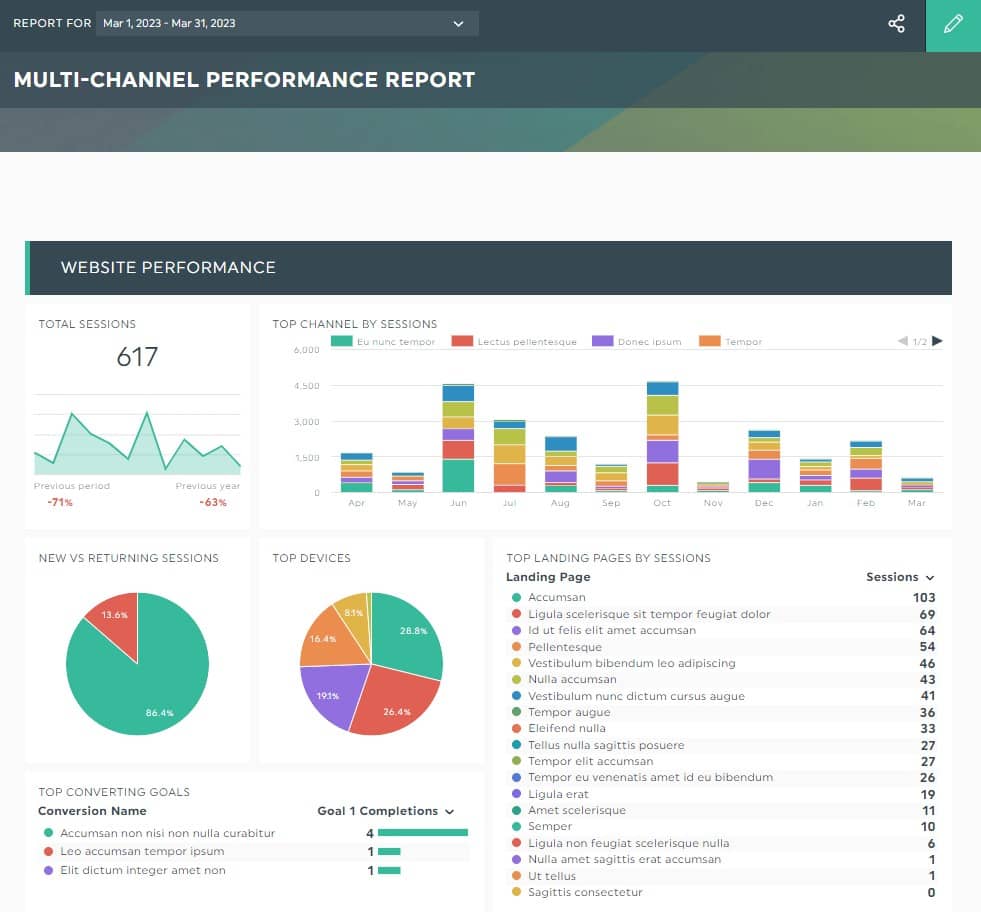
- High-ranking content: Mark the content that ranks higher on SERPs. Focus on key matrices used to make the content successful and bring in much organic traffic.
- Page Views and Engagement: To reach the goal, generate a report with the number of page views and engagement indicators, including average time on a page and bounce rates. Analyze which content is most effective and where the deficiencies are.
- Top Landing Pages: Mention which pages have the highest number of organic visitors. This can help you identify the content your friend list finds most relevant.
- Content Gaps: Some of the most important things to track are keywords and topics that your competitors occupy in the niche that you do not. These can be identified using tools like Ahrefs or SEMrush, and new content should then be planned to fill the gaps.
- Content optimization recommendations: Provide specific suggestions on utilizing the current content by changing the data, key terms, structure, or format.
4. Reporting on Backlinks
Backlinks are also very central in the determination of the ranking of a website or the level of authority it holds. Include a section in your report to analyze your client’s backlink profile, covering aspects such as:
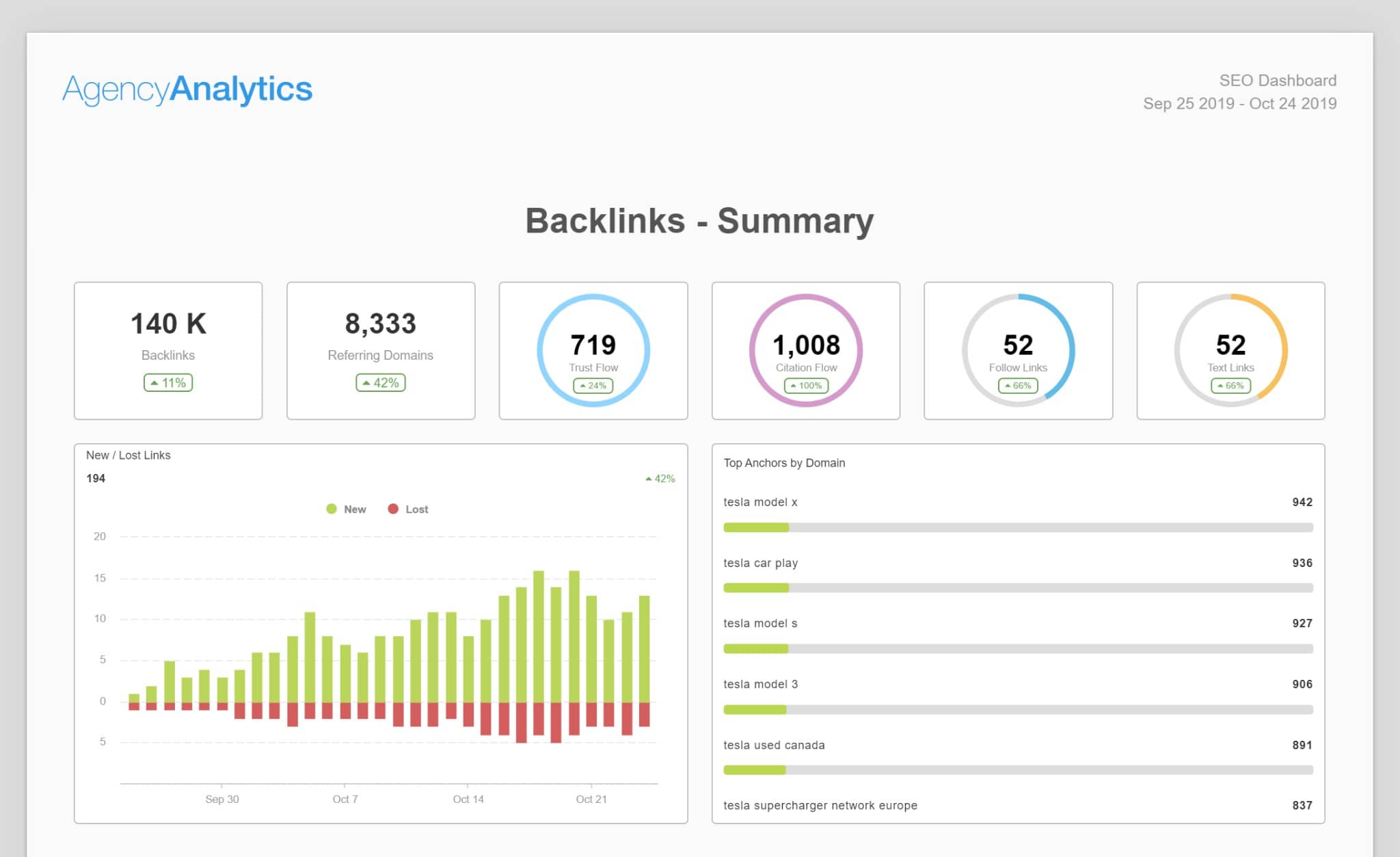
- New and Lost Backlinks: State the number of new backlinks they have secured and any lost backlinks. This helps explain the best practices for growing a profile’s backlinks.
- Top Referring Domains: Mention the most relevant sources that link to your site, which will underline the top-level domains. This can reveal how authoritative the backlinks that you are gaining are.
- Anchor Text Distribution: Another factor you must consider is the anchor texts used on your backlinks, ensuring they are relevant and varied.
- Backlink growth over time: Provide a graphical display of how your selected client’s backlinks have evolved over the period under consideration. This makes it easy to show the results of link-building strategies and detect sharp increases or declines in backlink collection.
- Toxic or spammy backlinks to address: Check your client’s backlink list for any toxic or spammy backlink that adversely affects the site’s reputation and search engine ranking. Offer ideas on how to disconnect from such links or how to get rid of them.
5. Reporting on Local SEO
This would be particularly important for local clients who should incorporate local SEO rankings. Cover the following aspects in your report:
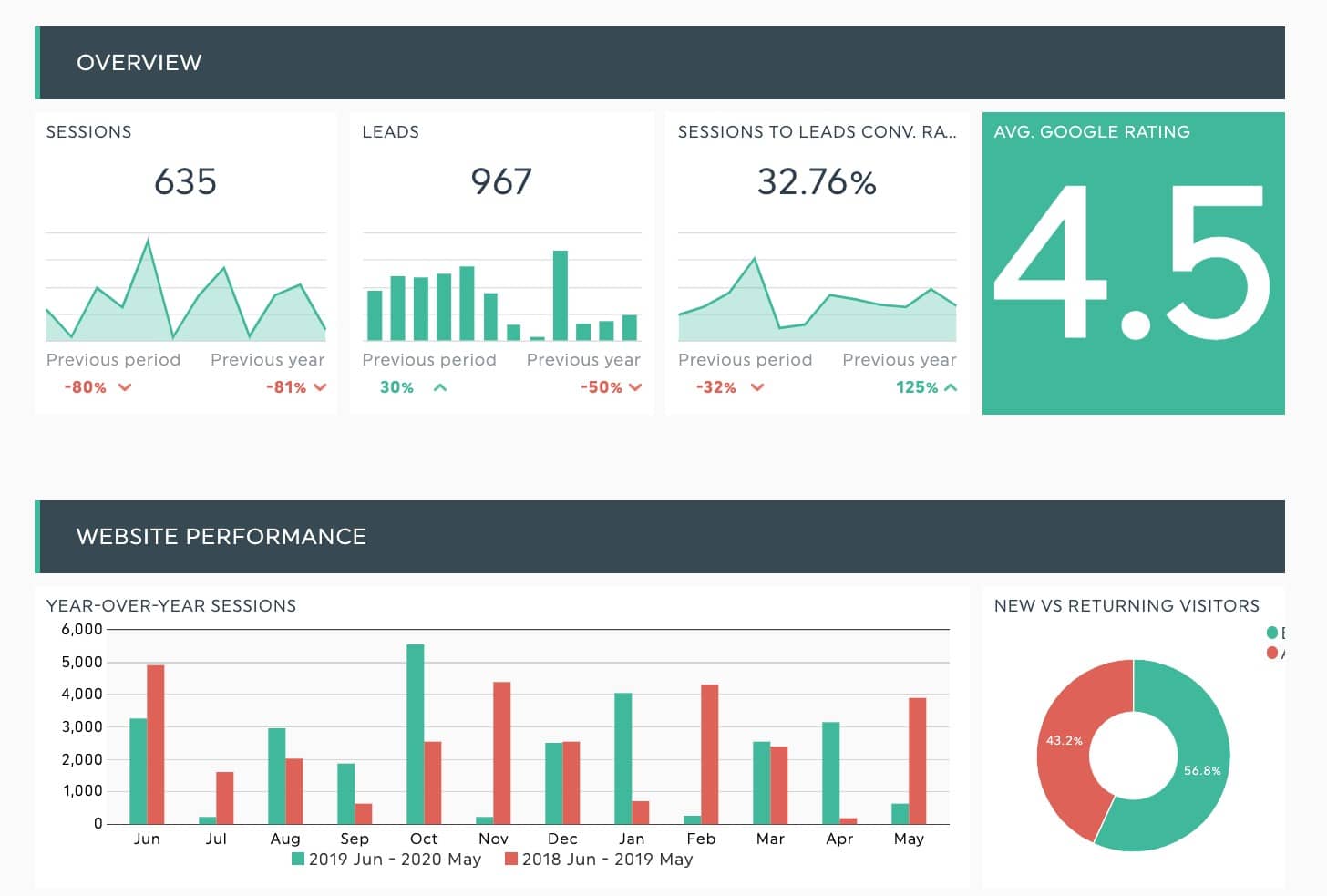
- Google My Business performance: The main steps are to review and evaluate your client’s Google My Business listing and the results, such as views, clicks, calls, and direction requests. It is also important to underline any enhancements or areas that could have been optimized.
- Local keyword rankings: Monitor the positioning of your client’s web resources for various local keywords (for example, ‘the best pizza in New York’) and display the results in a manner that is easy to interpret.
- Citations and local listings: Ensure that your client has a good listing for their business on local directories and other platforms. A briefing on their business details’ conformity and reliability in terms of name, address, phone number, etc., and possible enhancements, if any.
- Review management and reputation: Unfortunately, clients do not only write reviews on social media but on other platforms such as Google My Business, Yelp, and other business review sites specific to a client’s industry. Offer some analysis about the sentiment of the reviews and give some advice on how to deal with and answer reviews.
Recommendations and Next Steps
Summarize your SEO report, recommend future actions, and describe your strategy.
- Summary of Activities: Briefly describe the SEO activities performed during the reporting period.
- Upcoming Tasks: In the next period, the following major activities and objectives should be implemented:
- Opportunities for Improvement: Also, identify issues that require changes in the plan and ways of dealing with these issues.
SEO Report Template

Conclusion
Understanding how to create effective SEO reports is necessary to ensure you deliver your clients the best. If you emphasize the right metrics, utilize the right tools, and offer actionable and valuable insights, you can gain your clients’ trust and establish long-term business cooperation with them.
At AlgoSaga, smooth communication and decision-making driven by numbers are crucial. So, next time you craft your SEO reports or use the templates offered in this article, choose our SEO services to create an SEO report that will help move your SEO forward while proving your value to the team.
